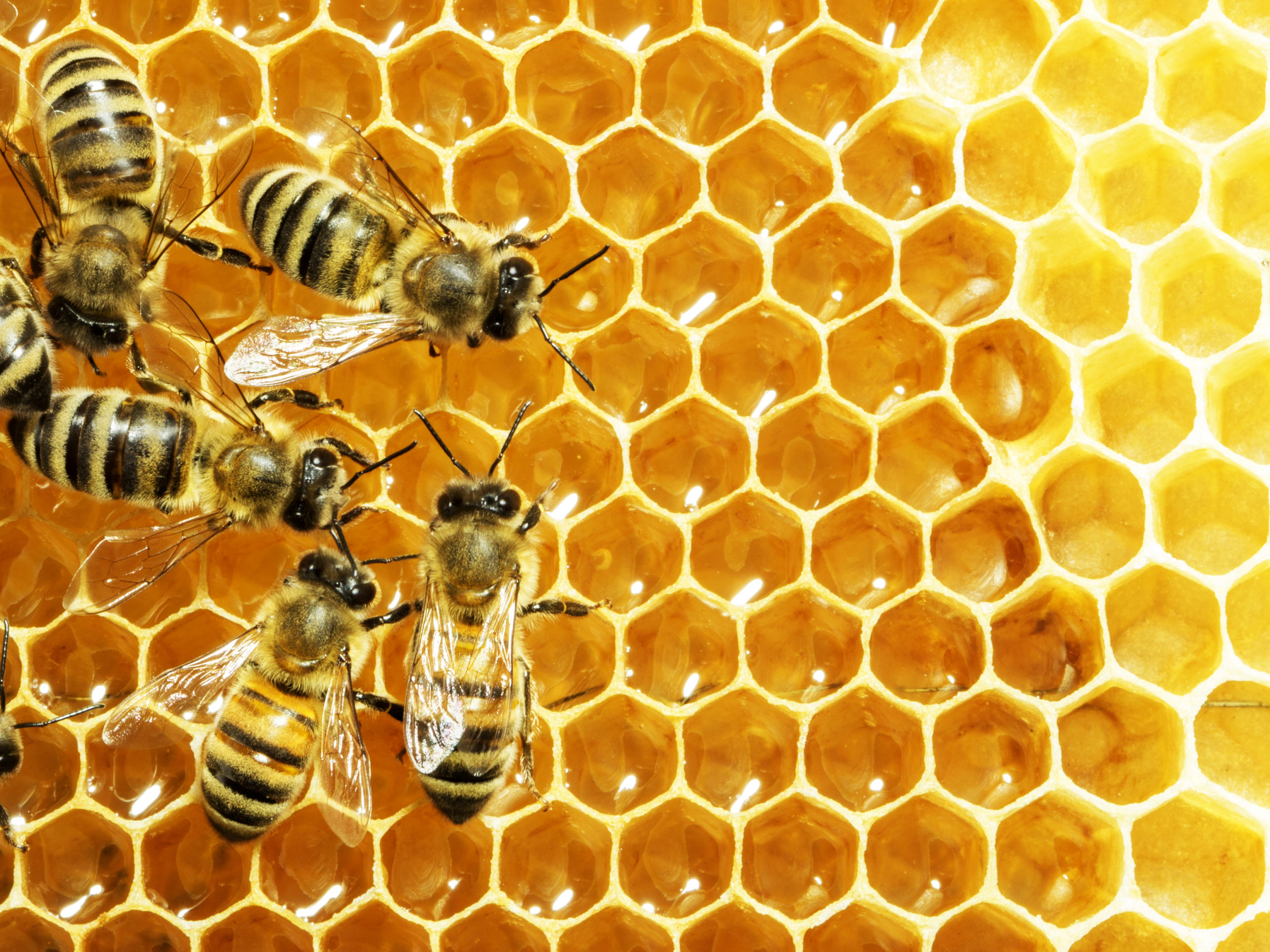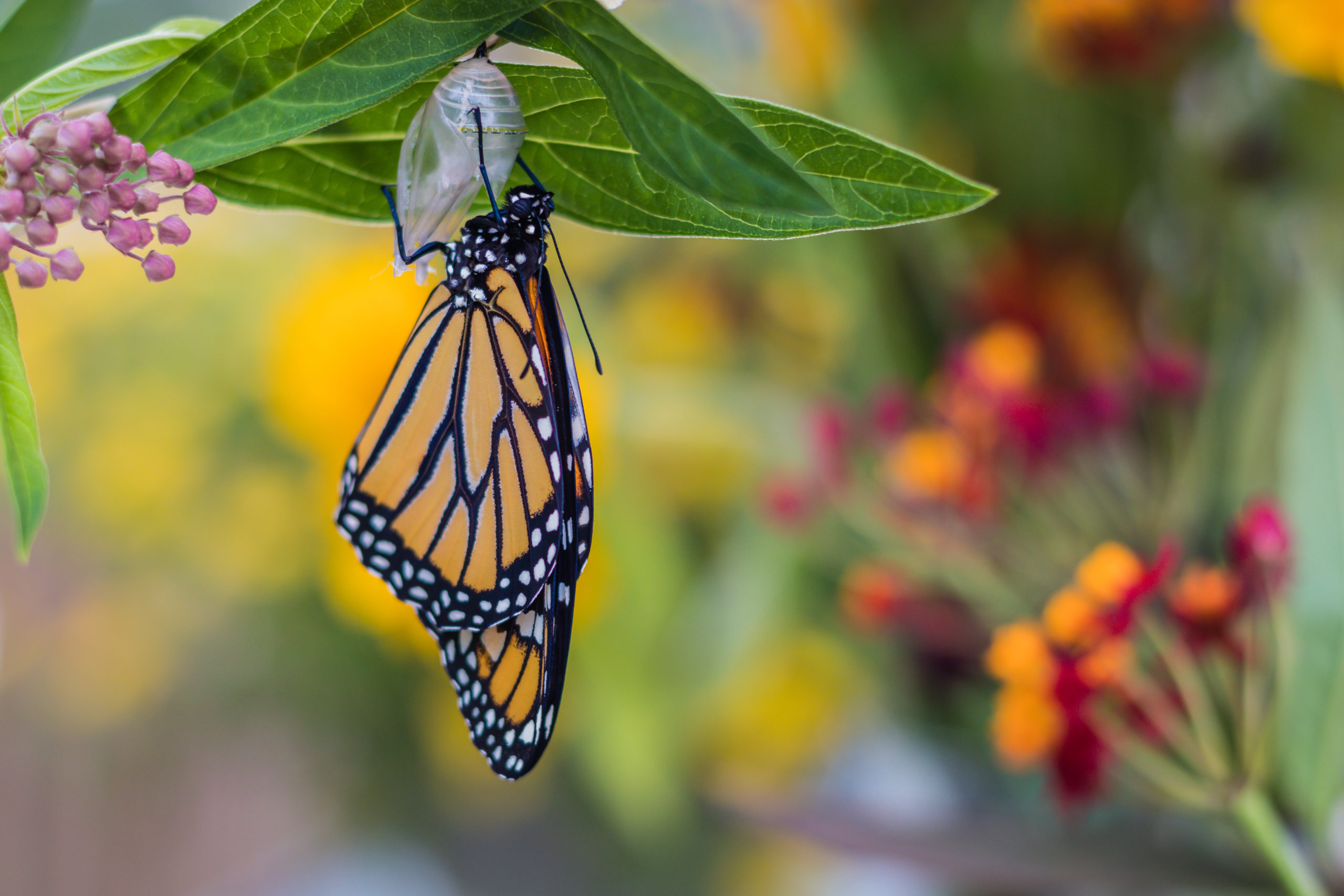Are Pest Episodes of Children’s Shows Accurate? – Part 2
Are Pest Episodes of Children’s Shows Accurate? – Part 2
Welcome to the second part of our series on pest-themed episodes of children’s shows! If you missed the first post, you can read it here and learn more about some beloved preschool programming. When children’s shows can remain entertaining while simultaneously teaching our kids about the world they live in, it is the perfect recipe for a beneficial time spent in front of the TV. Some educational shows can feel more like a documentary that your second-grade teacher would play on a rainy Friday afternoon, which is not usually the most exciting media to consume as a youth. But some of the most popular children’s shows of the 90’s and 2000’s achieved the balance of keeping young minds engaged and teaching kids true facts about the world – or did they? Let’s look into the facts of three more television shows with creepy-crawly episodes, and make sure you don’t miss the conclusion to our trilogy next week!
The Wide World of Insects

Show: Elmo’s World– “Bugs”
Episode Synopsis: The world of Sesame Street has already been a childhood staple for multiple generations, but its scheduled segment Elmo’s World has also cemented itself as a favorite among the children who watched the show around its premiere in 1998. Elmo spends each episode exploring a different everyday topic, and this one is all about bugs. After a host of bug-themed Muppets enter through the front door, Elmo starts posing questions and gaining answers from various friends about insects. Mr. Noodle eventually demonstrates how bugs move by flying (not rollerblading), Prairie Dawn reads the nursery rhyme “Little Miss Muffet,” and Elmo learns where bugs live outside. After his goldfish Dorothy re-imagines Elmo as a spider, a firefly, and a bee, the episode comes to an end with that memorable ending theme to close out yet another day spent in Elmo’s crayon-drawn room.
Fact or Fiction? First things first, there is one fact we have to address: spiders are not bugs or insects. These arachnids are often grouped in with all things creepy and crawly to make it easier for children watching the show to understand some of the similarities they have. It is not a big deal for your preschooler to think a spider is a bug, as we all have at one point, but we would be remiss if we didn’t mention that fact. Speaking of spiders, the giant puppet one that appears during Prairie Dawn’s reading has a much different diet than real spiders. While this one asserts its love for granola and yogurt, actual spiders commonly eat insects, worms, and small vertebrates. Something tells us that this big blue spider would scream at the thought of adding one of these delicacies to his nutritious breakfast, however.
As for the other insects, most of the statements made are correct. The children showing how different bugs move, as well as Elmo describing the habitats that various bugs call home, are all on point and engaging enough for children to remember. When Elmo and the children’s voices count the legs on an animated crawling centipede (with absurd eyes), they only get to 22 before the insect crawls out of sight. In reality, centipedes have anywhere from 15 to 177 pairs of legs! They are also blind and use their antennae to sense any prey, which is why they seem to crawl erratically, like the animated one in this episode. When Elmo describes the different habitats of insects, he ends with the Twiddlebugs that live in Ernie’s window box and have appeared in multiple Sesame Street episodes. This family of insects does not resemble any kind of real bug, and just look like fun, colorful Muppets. In real flower boxes, you can find critters like caterpillars, scale, aphids, and snails. The closest likening Twiddlebugs have to real insects is that they sing, which could be compared to the chirping of crickets who don’t stop until something larger than them comes near.
Subjective Accuracy Rating: 4.5/5
The Old Man Who (Possibly) Swallowed a Fly

Show: Rugrats – “Grandpa’s Bad Bug”
Episode Synopsis: This episode is not trying to be educational in terms of teaching its young audience about bugs, but the misconceptions about insects that drive this plot’s humor can still be assessed for accuracy. After Grandpa Lou attempts to sneak back into the house following an all-night card game, he lies to Stu and Didi by saying he caught a nasty stomach bug that caused him to get out of bed early. The babies overhear him and, predictably, believe that he has an actual bug in his stomach that’s making him sick. Grandpa Lou goes to bed to rest and ignore his guilt over lying, so Tommy, Chuckie, Phil, and Lil try different remedies to lure the bug out of him. They make a small picnic on his face to entice the bug, try to get the bug out with tools, and spread “good” bugs on his bed to fight off the bad bug. Like just about any person would be, Grandpa Lou is terrified at the sight of bugs on his bed and rushes outside to confess to Stu and Didi while offering to do all of the yard work for them. Kids who watched this walked away with two life lessons: lying is bad, and dumping a bucket of bugs onto a person’s bed is a surefire way to wake them up immediately.
Fact or Fiction? Although there are not any stated facts about insects to analyze here, there are a few misconceptions from the babies to analyze. Children can take the concept of a “stomach bug” literally in the real world as well, since it fits into children’s logic that a creepy insect could cause someone to be sick. But “stomach bug” is just another word for germs that infect a person with a virus. Specifically, the stomach flu, or gastroenteritis, goes by this phrase as well. These viruses are quite common and can easily spread if an infected person spends extended time in a public place, like a library or an office. Every year, over 20 million people get a “stomach bug” that can have moderate to severe symptoms, depending on the age and overall health of the person. Children and the elderly often experience the worst symptoms, which is not ideal considering how often this virus spreads around schools and senior centers.
As for the rest of the storyline, the babies showed a hefty amount of critical thinking for their ages. It is true that many actual insects enjoy our food and would fight other insects over the same habitat if an invasion occurred, so Tommy and his friends were right in line with a bug’s way of thinking. But if Grandpa Lou did swallow an insect, none of their attempts would have successfully drawn it out. The cartoon running gag (pun intended) of someone swallowing a bug while moving can happen in reality, but the insect would not be able to survive inside our bodies for long. If they didn’t die immediately, they would definitely not last in our stomachs and the acidic substances inside. One last event to note is the heaping bucket of insects that the babies bring to Grandpa Lou, which includes roaches, worms, beetles, and dragonflies. While it is impressive that four babies caught that many insects at one time, it is simultaneously concerning that they had no trouble finding them all. Once Stu and Didi are finished weeding the yard, they might want to call their local pest control company!
Subjective Accuracy Rating: 4.5/5
Curious About Caterpillars

Show: Stanley – “Caterpillar Countdown”
Episode Synopsis: When it comes to entertaining educational children’s television, Stanley should be right up there with the big ones. Every episode featured the titular character, his talking pets, and his friends learning more about nature, helped along by the illustrious Great Big Book of Everything. In this episode, Elsie the cat spots a caterpillar on a leaf and calls her friends over to watch as the insect forms a chrysalis right before their eyes. Stanley and Dennis the fish try to explain how the caterpillar will turn into a butterfly, but Elsie can’t see past the creepy appearance of the caterpillar to accept that fact. The group travels to south Mexico using the aforementioned magical Book, where they find plenty of monarch butterflies migrating to the warmer weather. Harry the dog loves the colorful fluttery insects and is excited for their caterpillar at home, but Elsie still doesn’t believe the facts. They return home and Elsie impatiently sits by the chrysalis for 14 days in the hopes of proving everyone wrong. But the beautiful butterfly emerges and lands on the cat’s head, possibly bidding its faithful friend farewell before embarking on a migratory journey of its own while Mimi and Marci join the group to flap their arms and pretend they’re butterflies too.
Fact or Fiction? It would be disappointing if Stanley’s bug-themed episodes was not accurate, considering it prides itself on asking open-ended questions of the audience and using the Great Big Book of Everything to state the facts. Thankfully, this episode has all the basic information about butterflies that children could need. Real caterpillars also attach themselves to leaves with silk and hang upside down in a J-shape before forming a chrysalis. It may not be as instantaneous as in the episode, but after 18 hours and the shedding of the exoskeleton, the caterpillar forms a chrysalis for protection as it gradually changes into a butterfly. It can take anywhere from 8 to 18 days for the new butterfly to flutter out, so Elsie’s butterfly emerging after 14 days is accurate.
Unfortunately, real butterflies do not have the luxury of immediately flying once they are finished growing in the chrysalis. While Elsie’s butterfly immediately took flight like nothing happened, real butterflies need to slowly unfold their wings and wait for an hour as their wings dry. They will often hide somewhere, like in foliage, so that they will not be picked off by predators when they are unable to fly. Butterflies live for anywhere from two to six weeks after the chrysalis, so they don’t have very long to enjoy their newfound wings. One of the most exciting parts of this episode, the monarch migration, is also true to life and one of the most interesting natural occurrences annually. There are multiple generations of butterflies hatched every year, and it is usually the fourth generation that migrates during September or October. It will stay in that warmer area for six to eight months, where it can overwinter and lay eggs in a temperate environment that is more likely to help them survive. The young audience can relate to Elsie’s impatience in waiting for something exciting, but they can use the example of a butterfly’s transformation to remember that some of the best things are worth waiting for.
Subjective Accuracy Rating: 5/5
Green Pest Services is Fun for the Whole Family!
The bug puppets in Elmo’s World and the beautiful butterfly in Stanley may be fun to look at, but real pests are not nearly as friendly and cute. Many of these critters cause more than just a headache for a homeowner; some, like rodents and cockroaches, carry multiple diseases that they transmit to humans both indirectly and directly. It is essential to get a handle on pest issues as soon as possible in order to minimize the damage and keep everyone in the family safe. Our technicians use their extensive training and deep knowledge of pests to tackle these problems in the most efficient ways possible. We value the safety of you and your family above all, which is why we use eco-friendly products to eliminate pests and protect your home. Contact us to schedule your first appointment and to learn how our services can ensure that the only pests your kids may run into are the colorful ones on the television screen.
***Disclaimer: Section 107 of the United States Copyright Act recognizes “fair use” copywriter content as such: “Notwithstanding the provisions of sections 106 and 106A, the fair use of a copyrighted work, including such use by reproduction in copies or phono-records or by any other means specified by that section, for proposes such as criticism, comment, news reporting, teaching, scholarship, or research, is not an infringement of copyright.” This blog post may contain certain copyrighted works and characters that were not specifically authorized to be used by the copyrighted holder(s), however, the content on this post qualifies as “commentary” on the copyrighted works under the “fair use” doctrine of the U.S. Copyright Act and is thereby protected by federal law. Furthermore, we do not claim any ownership or creative rights of any characters on this list, and all rights outside of the fair use doctrine belong to the respective owner(s).
Citations
Campbell, D., Jinkins, J., and Rubin, J. (Writers) & Buckland, J. (Director). (2001, December 28). Caterpillar countdown (season 1, episode 22b) [TV series episode]. In D. Campbell and J.
Jinkins (Executive Producer), Stanley. Cartoon Pizza and Playhouse Disney.
Freudberg, J. (Writer). (2001, January 2). Bugs (season 32, episode 2) [TV series episode]. Elmo’s world. Sesame Workshop.
How many legs do centipedes have?. (n.d.). Orkin. Retrieved January 3, 2023, from https://www.orkin.com/pests/centipedes/how-many-pairs-of-legs-does-a-centipede-have
Monarch butterfly life cycle (n.d.). City of Irving. Retrieved January 5, 2023, from https://www.cityofirving.org/2737/Monarch-Butterfly-Life-Cycle
Thutt, W.J. (Writer) & Bugental, R. and Holmquist, J. (Directors). (1997, November 29). Grandpa’s bad bug (season 5, episode 1) [TV series episode]. In G. Csupo and A. Klasky (Executive Producers), Rugrats. Games Animation, Klasky-Csupo, Nickelodeon Productions, and Nicktoons Productions.
Tinker, D. (2016, January 8). A visual journey through the monarch life cycle. NWF Blog. Available at https://blog.nwf.org/2014/09/a-visual-journey-through-the-monarch-life-cycle/ (Accessed on January 5, 2023).
A Simple Guide to Preventing Stinging Pests
A Simple Guide to Preventing Stinging Pests A Simple Guide to Preventing Stinging Pests Summary: Stinging insects are more active in warm weather, [...]
These 10 Natural Mosquito Repellents Can Actually Help
These 10 Natural Mosquito Repellents Can Actually Help These 10 Natural Mosquito Repellents Can Actually Help Summary: Natural mosquito repellents are easier to [...]
How to Get Rid of Carpet Beetles
How to Get Rid of Carpet Beetles How to Get Rid of Carpet Beetles Summary: Carpet beetles are sneaky pests that don’t usually [...]
How Do Roaches Affect Asthma and Allergies?
How Do Roaches Affect Asthma and Allergies? How Do Roaches Affect Asthma and Allergies? Summary: It’s no secret that pests impact human health, [...]
These 5 Carnivorous Pests Might Surprise You!
These 5 Carnivorous Pests Might Surprise You! These 5 Carnivorous Pests Might Surprise You! Summary: There are many eco-friendly ways to prevent pests, [...]
The 5 Pet Pests That Really Bug Dogs and Cats
The 5 Pet Pests That Really Bug Dogs and Cats The 5 Pet Pests That Really Bug Dogs and Cats Summary: Dogs and [...]

